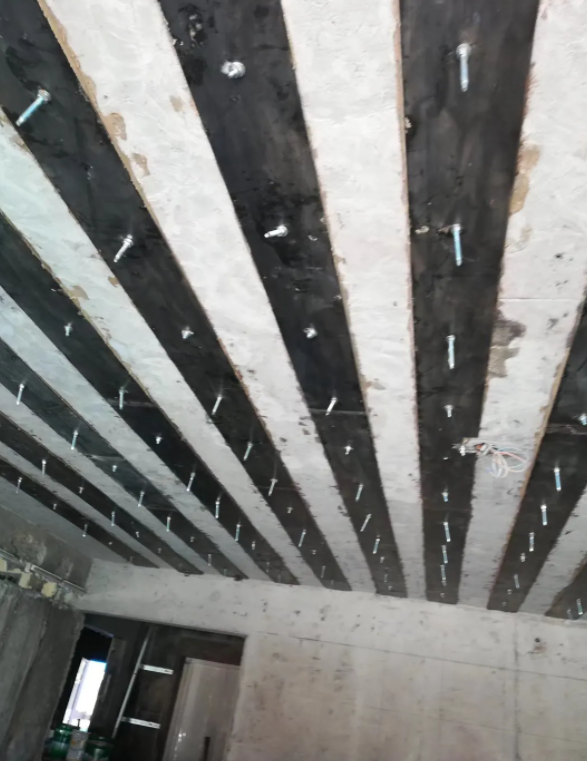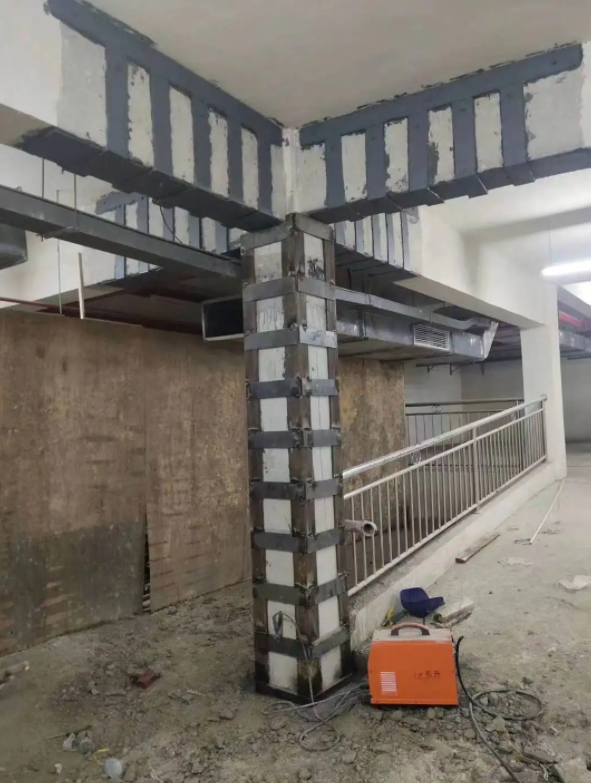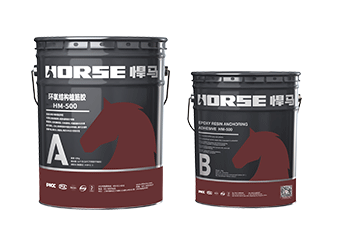Solutions
Horse Construction offers full range of structural strengthening materials with technical supports, documentation supports, products supports, project supports.
Bonded Steel Reinforcement Method And Inspection Method

The bonding steel reinforcement method generally uses an important bonding material, that is, building structural adhesive. This structural adhesive is generally composed of epoxy resin. Then the usual practice is generally to use a relatively thin steel plate, and to perform a certain treatment on the surface of the thin steel plate, and then stick the thin steel plate with an adhesive to the parts of the structure that need to be reinforced. A form of reinforcement in which thin steel sheets and concrete work in unison with this adhesive. This reinforcement method was widely popularized in my country in the 1980s. This reinforcement method can not only be used for general structures, but also widely used in the reinforcement of roads and bridges.
Compared with the traditional reinforcement method, the advantages of the bonded steel reinforcement method have the following characteristics:
1) The process is simple and the construction is convenient. As long as the parts that need to be reinforced are generally treated, the steel plate and the structural members to be reinforced are firmly bonded into a whole through the adhesiveness of the structural adhesive. In this way, the steel plate and the original structural members can work effectively in harmony with each other. In addition, no special equipment is required in this process, less human resources are used, and construction is more convenient.
2) Reinforcement construction not only does not require high requirements for the size of the site, but also the hardening speed of the structural adhesive is very fast. Under normal circumstances, the steel plate only needs 3d to be attached to the component to bear a certain load, so there is no need to stop production during the reinforcement process.
3) The steel plate used in the bonding steel reinforcement method is relatively thin, generally 4mm, and the space occupied by the steel plate is relatively small, which basically does not increase the weight and space of the structural member, and does not affect the appearance of the member after reinforcement.
4) The reinforcement effect is very obvious. The bonding steel reinforcement method not only effectively solves the problem that the original building structure steel bar does not meet the structural bearing capacity requirements. In addition, by using a large number of steel plates and components to effectively paste, the concrete in the original building part is protected, so that the component parts that need to be reinforced will not continue to have cracks or the component parts that have cracked will be effectively controlled. Therefore, the cracks no longer continue to extend and expand, the stability of the structural members is effectively strengthened, and the overall bearing capacity of the structural members is improved.
Disadvantages of Bonded Steel Reinforcement
Bonding steel reinforcement technology is a mature technology. People have not studied the bonding steel reinforcement method theoretically enough, and there are many problems that have not been completely solved. For example, the anti-aging properties of the adhesives we use are not strong enough, resulting in a short service life after structural reinforcement. Secondly, under the action of natural creep, the building structure will inevitably have a very adverse effect on the bond strength after reinforcement, resulting in the reinforcement of the structure may be damaged again due to the natural creep of the structure. Finally, the structure reinforced with bonded steel may also be damaged under the action of dynamic load. How to accurately quantify when it is damaged or the probability of being damaged, there is no suitable method and means, and there are few experiments on this research.

Test of bond strength between steel and concrete
How to judge whether the bond is qualified or not can be tested by testing whether the damage first occurs in the concrete.
1) Bonding shear strength, use high-strength concrete block with strength grade C40 or above to bond with steel block for double shear test
2) Bonding tensile strength
You can find anything here you are in need of, have a trust trying on these products, you will find the big difference after that.

Two-component modified epoxy resin adhesive, applied to chemical planting reinforcing bar and anchor bolt anchoring

Two-component epoxy modified epoxy structural strengthening adhesive for bonded steel plate to concrete

Modified epoxy resin structural perfusion adhesive, specifically for supporting adhesive bonded steel reinforcement